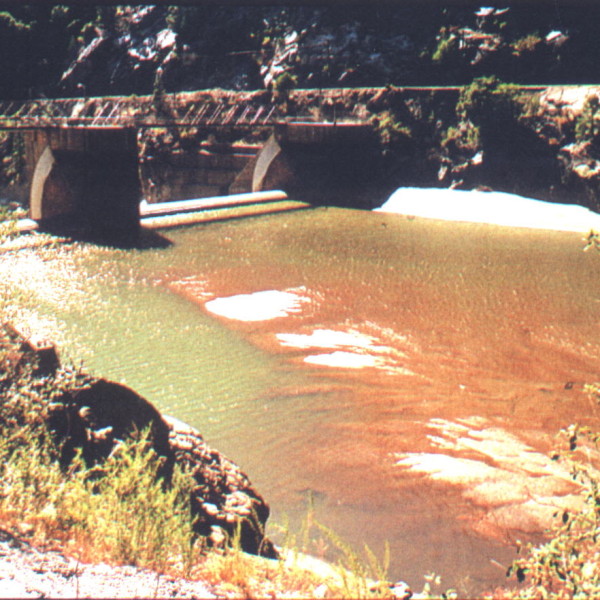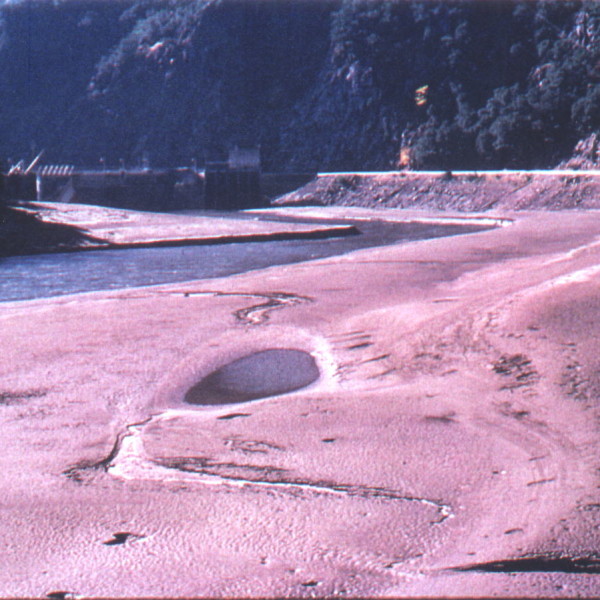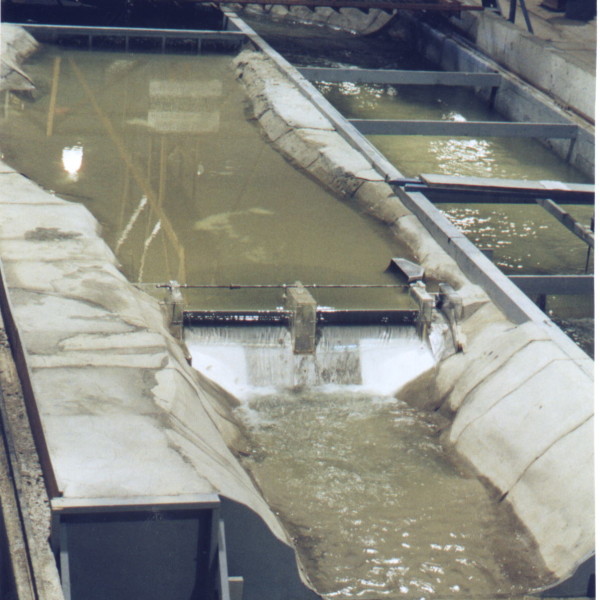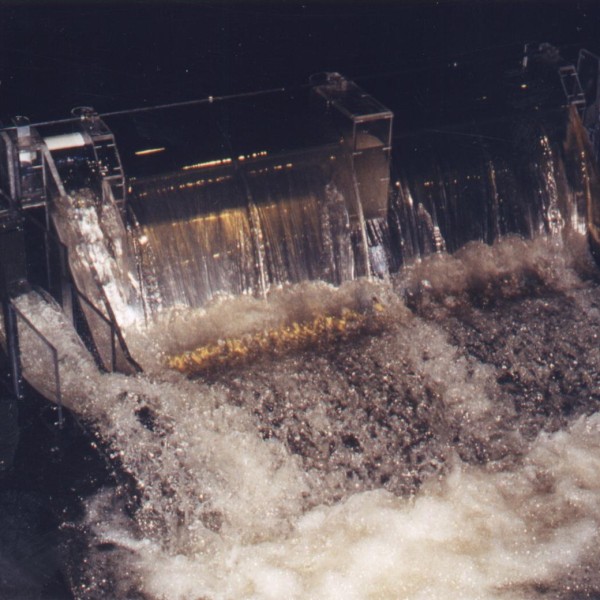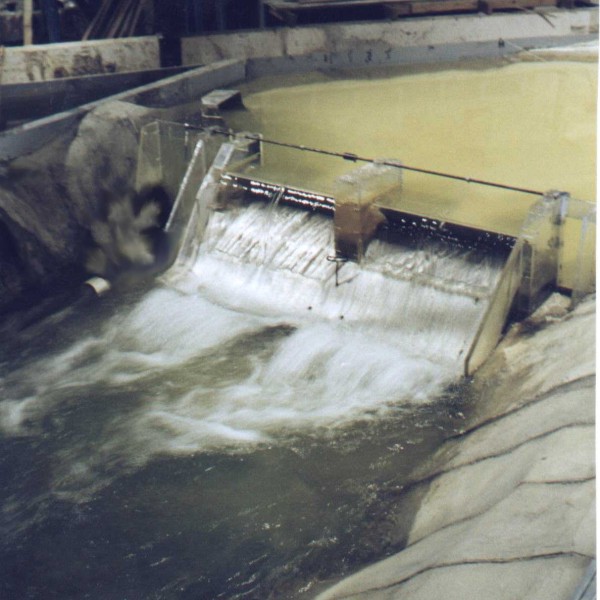Rock Creek and Cresta dams are two of the concrete gravity dams owned and operated by Pacific Gas and Electric Company along the North Fork Feather River. Since their construction in 1950, sediments have accumulated in the Rock Creek and Cresta reservoirs resulting in potentially reduced reliability of dam and powerhouse operations. Figures 1 and 2 show the sediment accumulation in these reservoirs. In order to mitigate the sedimentation problems within the environmental concerns, the structural modification initially proposed for Rock Creek dam consisted of constructing a 30 ft wide by 30 ft high top-sealing radial gate through the right abutment. For Cresta dam, two new 10 ft diameter outlet pipes were proposed through the dam.
A laboratory model study to test effectiveness of the proposed modifications was conducted by Dr. Albert Molinas. Scaled down models of the dams were placed in undistorted moveable-bed river models. Using series of experiments using lightweight plastic pellets and very fine sand to simulate reservoir sediments, the location of the proposed structures, their dimensions, and operational efficiencies were optimized.
The vertical positioning of both the sediment pass through pipes at the Cresta Dam and the 30 ft by 30 ft rectangular radial gate in the Rock Creek Dam were crucial to the sediment passing efficiencies of these structures. For the Rock Creek Dam, water discharged through the submerged sediment pass-through spillway posed an additional challenge by creating a recirculation zone immediately downstream from the dam. This adverse effect was resolved by experimentally adjusting the discharge distribution between the pass-through and main spillway gates, and by developing spillway operation rules.
Figure 5 shows the Rock Creek Dam model with an alternative sediment passing structure that consisted of a large diameter sediment pass-through pipe located at the right abutment. This solution reduced the cost of the structural modifications from an estimated $30 million to approximately $8 million.


